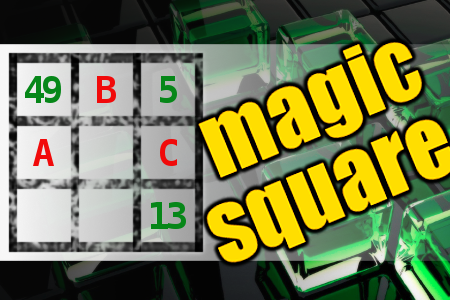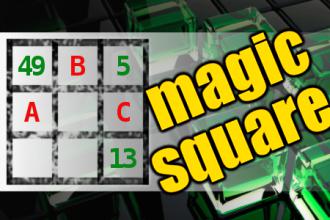MAGIC SQUARE: Calculate A*B+C
The aim is to place the some numbers from the list (1, 3, 5, 9, 13, 15, 17, 49, 51, 53) into the empty squares and squares marked with A, B an C. Sum of each row and column should be equal. All the numbers of the magic square must be different. Find values for A, B, and C. Solution is A*B+C.Correct answers: 10
The first user who solved this task is Nasrin 24 T.
#brainteasers #math #magicsquare


